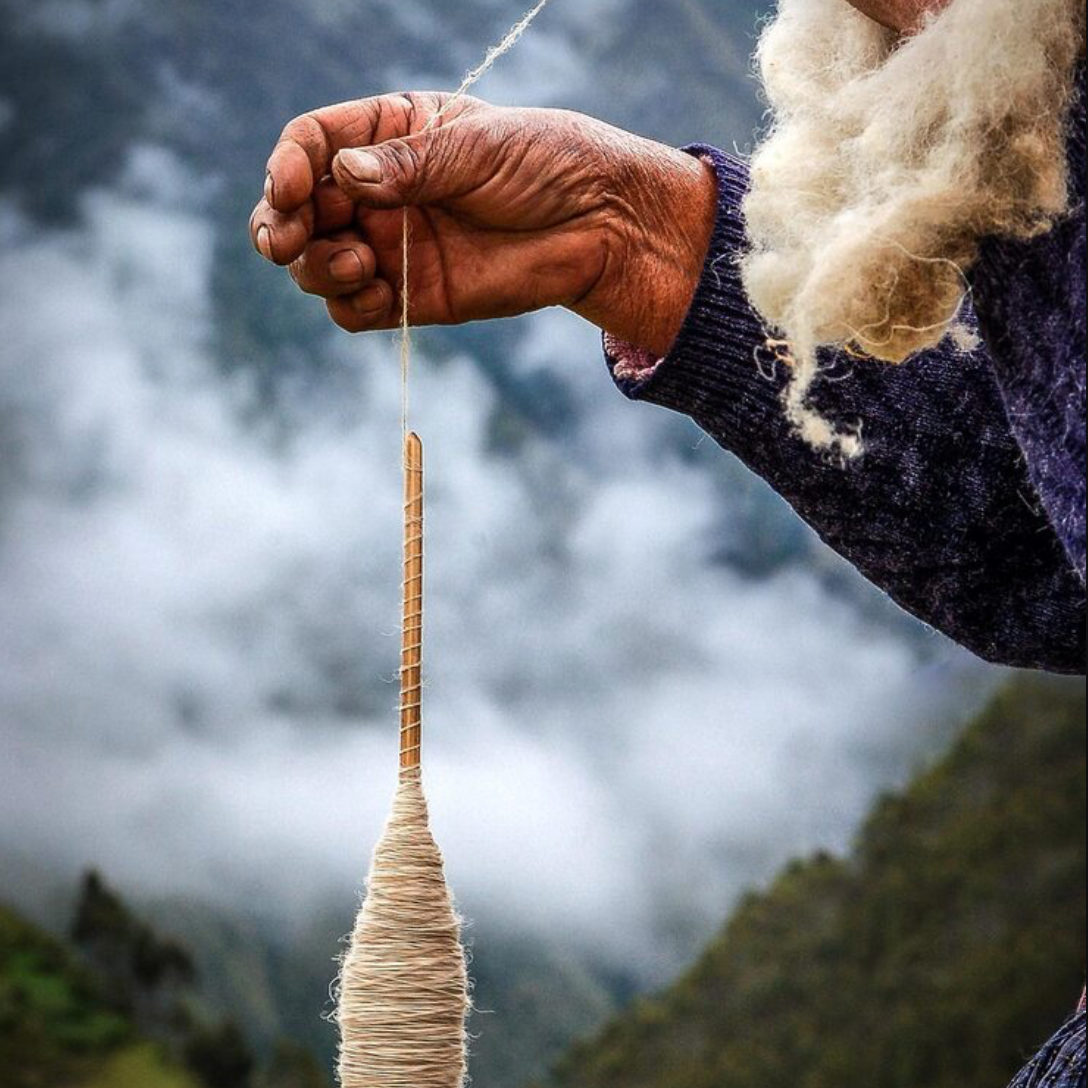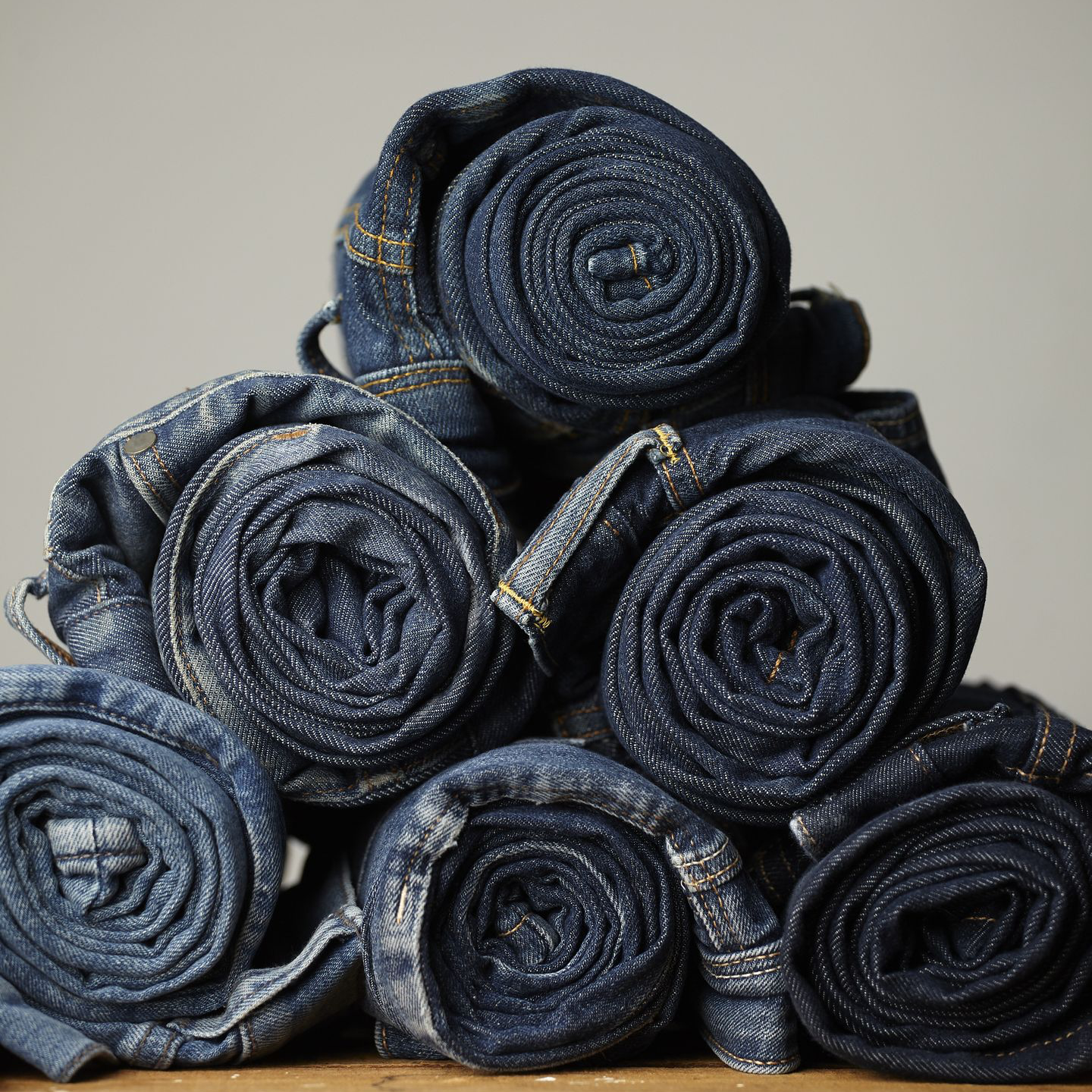India is rapidly turning textile “waste” into raw material for new value—ranging from export-grade rugs and blankets to premium denims and next-gen cellulosic fibres. Below is an in-depth look at how this circular shift actually works on the ground, who’s leading it, and what it means for designers and brands.
1. The Waste Streams: What’s Being Recycled?

Pre-consumer / mill waste
Cutting-room clippings, selvage edges, cone ends, off-shade fabric.

Post-industrial waste
Yarn and fabric rejects from spinning, weaving, dyeing/printing.

Post-consumer textiles
Used garments imported/domestic collections that are sorted, shredded, and re-spun.
A growing share of this material is now mechanically recycled into yarns or chemically recycled back into fibres suitable for new fabrics. India’s largest concentration of mechanical recycling capacity is in Panipat (Haryana), widely described as Asia’s biggest textile recycling hub, processing 100,000+ tonnes of used garments annually into shoddy/open-end yarn for rugs, durries and blankets.
2. Where the Magic Happens: India’s Recycling Hubs

Panipat, Haryana – The shoddy yarn powerhouse
- ~300 tonnes/day of discarded cloth are recycled across ~200 spinning mills (open-end). The output feeds a robust ecosystem of rugs, blankets and upholstery—a significant export engine.
- “Shoddy” wool yarn—made by shredding discarded woollens—still underpins Panipat’s iconic blanket trade, now marketed with stronger sustainability narratives.

Ahmedabad & Gujarat denim corridor – Circular denims
- Arvind Limited has introduced denims with higher recycled content (pre- and post-consumer) and partnered across the value chain to scale circular inputs; its 2024 sustainability reporting highlights integrating recycled fibres and expanding circular initiatives.
- Arvind has also worked with innovators to embed textile-to-textile pulp in denim, a step toward true fibre-to-fibre circularity

All-India (cellulosics) – Chemical recycling at scale
- Birla Cellulose (Aditya Birla Group) struck a five-year strategic partnership (Oct 28, 2024) with US recycler Circ. Birla will buy ≥5,000 tonnes/year of Circ’s recycled cellulose pulp from its first commercial-scale plant and convert it into lyocell staple fibre—a big proof-point for scaling textile-to-textile recycling.
3. How Mill Waste Becomes “Designer Gold”
Chemical route (fast scaling)
- Feedstock (cotton/cellulosic blends) is deconstructed to pulp.
- Pulp is re-dissolved and extruded into fibres (e.g., lyocell).
- Fibres are spun/knitted/woven like virgin MMCF—with far higher quality retention than mechanical routes.
Partnerships like Birla Cellulose × Circ are pivotal to commercialising this pathway in/with India.
Mechanical route (dominant today)
- Sorting & grading of cut-clips/garments by fibre and colour.
- Shredding / garnetting to recover staple fibres.
- Spinning (often open-end) into recycled yarns.
- Weaving/knitting into rugs, throws, upholstery, or heavier fashion fabrics.
Panipat has perfected this model for woollens and cotton-rich blends, supplying both domestic and export markets.
Upcycling (design-led): Independent labels (e.g., Doodlage) use pre-consumer and post-consumer waste to make new garments and accessories, often converting their own leftover scraps into trims/packaging—showing a design-first circular model that resonates with conscious consumers.
4. Policy Tailwinds and Why They Matter
India’s EPR readiness
A 2025 systems study outlines how Extended Producer Responsibility (EPR) could be implemented for textiles in India—pushing brands to finance collection/sorting/recycling and catalyse infrastructure.
Global legislation momentum
The EU’s 2025 moves toward mandatory EPR for textiles (via the revised Waste Framework Directive) will require producers to fund collection, sorting, reuse and recycling—driving demand for recycled feedstocks globally, including from India.
Sector initiatives
At Bharat Tex 2025, collaborations linked to UNIDO-GEF and India’s Ministry of Textiles highlighted pilots in hubs like Tiruppur to transition to resource-efficient, circular production.
5. What Designers and Buyers Can Source Today (with Pros & Cons)
Recycled Input
Shoddy / mechanically recycled wool (Panipat)
Recycled cotton/open-end yarns
Chemically recycled cellulosics (e.g., lyocell from textile pulp)
Designer upcycled lots (pre-consumer waste)
Typical Products
Blankets, rugs, heavy outerwear.
Tees, sweatshirts, denim blends
Wovens/knits akin to virgin MMCF; fashion & home
Limited-run fashion, accessories
Pros
Very low cost, high volume, colour-sorted (often no re-dye)
Cuts virgin cotton demand; robust for casualwear
Near-virgin quality; scalable circularity
High storytelling value; visible sustainability
Watch-outs
Shorter fibres → lower strength; pilling; quality variance
Strength & shade consistency depend on feedstock purity.
Early in scale-up; premium pricing; supply allocation.
Limited volumes; irregular sizes/colours.
6. Quality, Testing & Traceability

Consistency
Mechanical recycling shortens fibres—expect lower tensile strength and manage with blends (e.g., r-cotton + virgin).

Dye/finish
Colour-sorted recycling can avoid re-dyeing, but chemical finishes must be checked for restricted substances when feedstock is imported.

Traceability
Cellulosic chemical recycling projects increasingly offer chain-of-custody data; designers should request audit trails and blend declarations from suppliers. (The Birla × Circ model is notable for locking in offtake and signalling bankable demand.)
7. Challenges to Solve
Feedstock contamination & fibre blends
Slow down both mechanical and chemical routes; better sorting infrastructure is critical. (Sorting-for-Circularity research for India lays out practical roadmaps.)
Leakage & “waste colonisation” risks
Investigations highlight how exported textile waste can shift environmental burdens to receiving countries—raising the bar for compliance and transparency.
Finance for scale
Large-scale chemical recycling needs bankable offtake (like Birla × Circ), policy clarity (EPR), and working-capital solutions for collectors/sorters.
8. What to Do Now: A Quick Playbook for Brands
3. Co-develop with hubs
Source rugs/blankets
/upholstery from Panipat; specify performance tests and colour controls up front.
2. Pilot fibre-to-fibre
Trial recycled-cellulosic lyocell in 1–2 styles; track hand-feel and cost.
1. Start with pre-consumer waste
Close the loop in your own cutting rooms; buy back your sorted clips as r-yarn.
4. Plan for EPR
Map likely obligations and set aside budgets for collection/sorting; engage Producer Responsibility Organisations early.
5. Tell the story
Upcycled capsule lines (like Doodlage’s model) show consumers how waste becomes design—use QR codes and impact cards.
India’s circular textile economy is moving from craft-scale upcycling to industrial-scale recycling. With Panipatanchoring mechanical routes and partnerships like Birla Cellulose × Circ scaling fibre-to-fibre, designers can now spec recycled inputs with far more confidence—and consumers can buy products that genuinely turn waste into worth.

